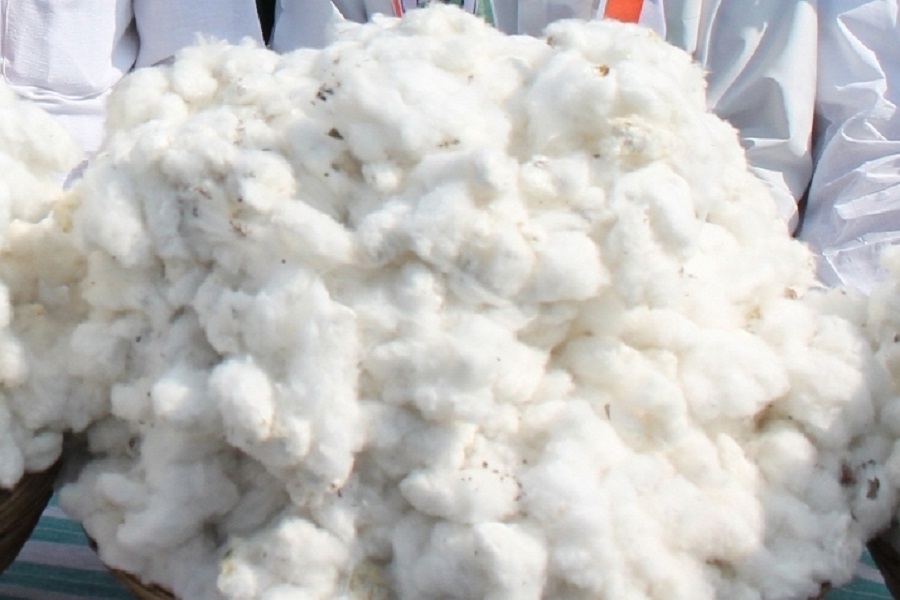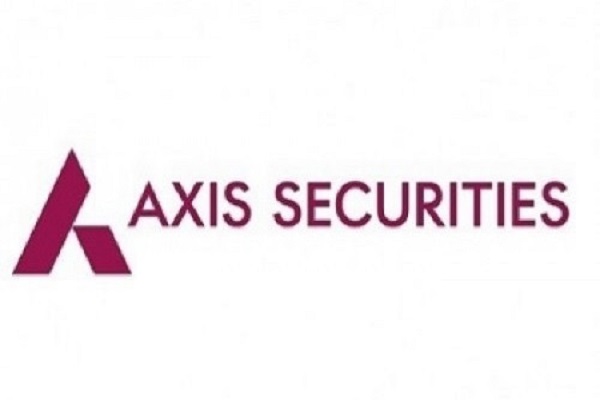Gold trading range for the day is 121370-125970 - Kedia Advisory

Gold
Gold prices surged by 1.84% to settle at 1,24,104 as safe-haven demand strengthened amid renewed geopolitical tensions and global trade uncertainties. Reports that the U.S. may impose export restrictions on China and fresh sanctions on Russia lifted bullion’s appeal, while news of a possible Trump–Xi meeting added a layer of optimism to global trade sentiment. Additionally, expectations of two more U.S. Federal Reserve rate cuts this year supported non-yielding assets like gold. Goldman Sachs reaffirmed its bullish outlook, projecting prices to reach $4,900 per ounce by end-2026, citing structural investment demand and portfolio diversification trends. Physical gold demand in Asia remained robust despite record prices. In India, premiums surged to $25 per ounce — the highest in over a decade — ahead of key festive demand, though smuggling activity has reportedly increased due to elevated prices and supply tightness. In China, bullion traded at steep discounts of $20–$66 an ounce, reflecting weak local sentiment, while premiums in Hong Kong, Singapore, and Japan remained modest. Swiss customs data showed exports to China jumped 254% in August to 35 tonnes, the highest since May 2024, while shipments to India also rose to 15.2 tonnes. However, exports to the U.S. dropped sharply to just 295 kg from 51 tonnes in July amid trade uncertainty. Technically, the market is under short covering as open interest fell by 4.07% to 12,885 while prices rose 2,247. Gold finds support at 1,22,740 and 1,21,370, while resistance is seen at 1,25,040 and 1,25,970.
Trading Ideas:
* Gold trading range for the day is 121370-125970.
* Gold rose as investors weighed trade developments and geopolitical tensions that lifted the metal’s safe-haven appeal.
* Reports indicated that the US is considering export restrictions on China involving American-made software.
* Expectations that the Federal Reserve will deliver two more rate cuts by year-end also supported bullion.
Silver
Silver prices climbed by 2.03% to settle at 1,48,512, supported by safe-haven demand amid escalating global trade and geopolitical tensions. Reports that the U.S. is considering export restrictions on China and sanctions on major Russian oil producers lifted investor appetite for precious metals. Additionally, optimism surrounding silver’s long-term industrial use in electric vehicles, solar panels, and data centers added further upside momentum. Supply tightness in key vaults in London and Shanghai also contributed to the rally, though recent shipments of silver from the U.S. and China helped ease the liquidity squeeze in London’s over-the-counter market. According to the London Bullion Market Association, silver held in London vaults totaled 24,581 tons worth $36.5 billion as of end-September. On the investment front, silver-backed exchange-traded products (ETPs) saw net inflows of 95 million ounces in the first half of 2025, pushing total holdings to 1.13 billion ounces—just 7% below the all-time high of 1.21 billion ounces in early 2021. The Silver Institute projected a narrower global deficit of 117.6 million ounces in 2025, as supply is expected to rise 2% and demand to ease 1%. Retail investment demand in India remained strong, rising 7% year-on-year, while European investment continued its gradual recovery. Industrial demand is forecast to remain steady after last year’s record 680.5 million ounces. Technically, the market is under short covering as open interest fell by 4.84% to 20,628 while prices rose 2,954. Silver finds support at 1,46,345 and 1,44,185, with resistance at 1,50,220 and 1,51,935.
Trading Ideas:
* Silver trading range for the day is 144185-151935.
* Silver climbed as mounting global trade and geopolitical tensions boosted demand for safe-haven assets.
* Trump administration blacklisted Russia’s top oil producers, Rosneft and Lukoil, in an effort to push to end Ukraine war.
* The recent surge was fueled by strong safe-haven inflows and optimism about silver’s long-term industrial demand.
Crude oil
Crude oil prices surged by 5.55% to settle at 5,437 as renewed geopolitical tensions and fresh sanctions on Russia lifted prices. The U.S. imposed sanctions on major Russian oil producers Rosneft and Lukoil over the Ukraine conflict, following similar actions by the U.K. and EU’s latest sanctions package, which included a ban on Russian LNG imports. The restrictions are expected to disrupt trade flows, forcing major Asian refiners such as China and India to seek alternative crude suppliers. Meanwhile, the International Energy Agency (IEA) raised its forecast for global oil supply growth in 2025 due to OPEC+ production hikes but trimmed demand expectations, citing weaker economic activity. The agency expects oil demand to rise by only 700,000 barrels per day (bpd) annually through 2026. U.S. Energy Information Administration (EIA) data showed crude inventories rising by 3.5 million barrels to 423.8 million, while gasoline and distillate stocks fell, indicating stronger consumption trends. Refinery utilization dropped sharply by 6.7 percentage points to 85.7%, signaling lower processing activity. OPEC’s monthly report maintained a solid outlook for global demand and noted that OPEC+ output rose by 630,000 bpd to 43.05 million bpd in September, leaving the market in a marginal 50,000 bpd deficit. Technically, crude oil is under short covering as open interest dropped by 27.65% to 14,766 while prices gained 286. Support is seen at 5,241 and 5,045, while resistance is at 5,554 and 5,671.
Trading Ideas:
* Crudeoil trading range for the day is 5045-5671.
* Crude oil rose after the U.S. imposed sanctions on major Russian suppliers Rosneft and Lukoil over the Ukraine war.
* EU formally adopts 19th package of sanctions against Russia
* Crude inventories fell by 961,000 barrels to 422.8 million barrels in the week ended October 17, the EIA said.
Natural gas
Natural gas prices declined by 2.88% to settle at 296.7, pressured by a larger-than-expected storage build that reinforced ample supply conditions. U.S. energy firms injected 87 billion cubic feet (bcf) of gas into storage during the week ended October 17, exceeding expectations of an 83 bcf build and the five-year average. This increase pushed inventories to 0.9% above last year’s level and 4.5% above the five-year average, signaling comfortable supply heading into the winter season. The bearish impact from higher storage overshadowed supportive factors such as stronger near-term demand forecasts, lower domestic production, and robust LNG export flows. LSEG data showed that U.S. output in the Lower 48 states has averaged 106.6 billion cubic feet per day (bcfd) so far in October, down from 107.4 bcfd in September and a record 108 bcfd in August. Despite the recent dip, the U.S. Energy Information Administration (EIA) projects dry gas production to rise to record highs of 107.1 bcfd in 2025 and 107.4 bcfd in 2026, alongside record consumption levels. LNG exports are also expected to climb sharply to 14.7 bcfd in 2025 and 16.3 bcfd in 2026, reflecting strong global demand. Technically, the market is under long liquidation as open interest fell by 14.54% to 12,448 contracts while prices declined 8.8. Immediate support is at 291.3, with further downside potential toward 285.9, while resistance is seen at 305.1 and 313.5 on the higher side.
Trading Ideas:
* Naturalgas trading range for the day is 285.9-313.5.
* Natural gas slid as bigger-than-expected storage build keeps inventory well above normal.
* That price decline came despite forecasts for more demand, a fall in output and near-record flows LNG export plants.
* The U.S. Energy Information Administration said energy firms injected 87 billion cubic feet (bcf) of gas into storage
Copper
Copper prices gained 0.93% to settle at 990, supported by optimism over China’s upcoming five-year plan and expectations of fresh stimulus, despite renewed U.S.-China trade tensions. The White House is reportedly considering new restrictions on software-linked exports to China, which capped gains. On the supply side, China’s copper output fell 2.7% month-on-month in September, while Chilean miner Antofagasta reported only a 1% rise in quarterly production, expecting annual output at the lower end of its 660,000–700,000 tons forecast. Continued mine disruptions, including at Indonesia’s Grasberg mine, have further tightened global supplies. China’s imports of copper concentrate dropped 6.2% in September to 2.59 million tons due to export issues from Indonesia, while refined copper imports rose sharply by 14.1% to 485,000 tons, reflecting resilient demand. The Yunnan Copper Premium fell to $36 per tonne, signaling weaker near-term demand, but supply constraints provided price support. The International Copper Study Group (ICSG) reported a 57,000-ton global surplus in July and projects a 178,000-ton surplus in 2025, followed by a 150,000-ton deficit in 2026, indicating a potential tightening outlook longer term. Technically, the market is under short covering, with open interest down by 9.49% to 3,883 as prices rose 9.1. Immediate support is at 983.9, below which prices could test 977.8, while resistance is seen at 994.4, and a break above could push prices toward 998.8.
Trading Ideas:
* Copper trading range for the day is 977.8-998.8.
* Copper gained amid expectations of China's new five-year plan.
* China's copper output in September was down 2.7% month-on-month, despite a 10% jump year-on-year.
* Antofagasta sees annual copper output at lower end of guidance.
Zinc
Zinc prices slipped by 0.56% to settle at 299.3 as traders booked profits after recent gains driven by optimism that China may introduce fresh stimulus measures in its upcoming five-year plan. Despite the pullback, tight supply conditions continue to support the market, with LME zinc stockpiles dropping sharply to below 37,300 tonnes from over 230,000 tonnes at the start of the year. Cash zinc traded at a premium of $279 per ton to three-month futures, reflecting extreme tightness in nearby supplies. The International Lead and Zinc Study Group (ILZSG) reported that refined zinc output has declined by more than 2% this year, even as mined production rose 6.3%, mainly due to smelting bottlenecks in Kazakhstan and Japan. The closure of Japan’s Toho Zinc Annaka plant and reduced output from Mitsui Mining have further tightened supply. Meanwhile, global refined zinc markets posted a surplus of 30,200 tonnes in July, compared with a deficit of 21,100 tonnes in June, bringing the year-to-date surplus to 72,000 tonnes — smaller than last year’s 185,000 tonnes. In China, refined zinc production fell 4% month-on-month in September but surged 20% year-on-year. Output is expected to rise 4% in October amid partial resumptions in several provinces. Technically, the market is under long liquidation as open interest dropped 21.47% to 1,983 while prices eased 1.7. Support is seen at 296.9, below which prices could test 294.3, while resistance lies at 303.2, and a break above could take prices to 306.9.
Trading Ideas:
* Zinc trading range for the day is 294.3-306.9.
* Zinc dropped on profit booking after prices gained on hopes that China will unleash more stimulus.
* Cash zinc contracts traded at a $279-a-ton premium to three-month futures, near a multi-decade high above $300 struck on Tuesday.
* Zinc production at Golden Grove mine drops to 2.0 kt from 19.1 kt from prior year.
Aluminium
Aluminium prices edged higher by 0.53% to settle at 265.7, supported by tightening global supply conditions after Century Aluminium announced a two-thirds production curtailment at its Iceland smelter due to an electrical equipment failure. The supply disruption comes amid concerns that China’s aluminium output cap of 45 million tonnes may be breached this year, raising worries about near-term shortages. Beijing’s decision to slow industrial capacity growth—cutting its annual base metal output target to 1.5% for 2025–26 from 5% previously—has also reinforced expectations of tighter supply ahead. According to IAI, global primary aluminium output rose modestly by 0.9% year-on-year to 6.08 million tonnes in September. Aluminium stocks at Japan’s three major ports increased slightly by 1.8% to 341,300 tonnes, while China’s aluminium trade flows showed mixed trends. Exports of unwrought aluminium and products fell to 521,000 tonnes in September from 534,000 tonnes in August, but imports jumped 35.4% year-on-year to 360,000 tonnes. In the first nine months of 2025, China’s total imports reached 3.01 million tonnes, up 5.7% from the same period in 2024, reflecting steady demand. Meanwhile, Alcoa’s decision to close its Kwinana alumina refinery in Australia and increased aluminium use in new data centers have strengthened long-term consumption prospects. Technically, the market is under short covering as open interest declined by 7.05% to 2,096 while prices rose 1.4. Support is seen at 264.7, below which prices may test 263.7, while resistance is at 266.3, with a breakout potentially leading to 266.9.
Trading Ideas:
* Aluminium trading range for the day is 263.7-266.9.
* Aluminium gains as Century Aluminium said its smelter in Iceland was forced to curtail production by two thirds.
* Global aluminium output rises 0.9% year on year in September – IAI
* China aluminium production up 1.8 % to 3.81 mln metric tons in Sept
Turmeric
Turmeric prices fell sharply by 6% to 14,420 amid heavy profit booking, driven by reports of increased acreage following favourable monsoon rains during the sowing season. The correction came after earlier gains supported by concerns over crop damage in Maharashtra, Andhra Pradesh, and Karnataka, where excessive rainfall affected yields. In Erode, continuous rains have led to disease outbreaks in certain areas, as high humidity hampers storage conditions. Additionally, recent heavy rainfall in Nanded caused about 15% damage to the standing crop, further tightening near-term supplies. Despite temporary weakness, fundamentals remain supportive as turmeric stocks with farmers in Warangal are nearly exhausted, and arrivals have been limited over the past few days. Meanwhile, dry weather in several growing belts is now aiding timely sowing, and acreage for 2024–25 is projected to rise by 15–20%, reaching around 3.30 lakh hectares, up from 3 lakh hectares last season. At the Duggirala market, strong demand for new crop arrivals continues, with fresh produce fetching a premium due to superior quality. Turmeric exports during April–August 2025 rose 3.31% to 80,156.56 tonnes, showing steady overseas demand. Technically, the market is under long liquidation as open interest fell by 3.78% to 11,700 while prices dropped 920. Turmeric finds support at 14,112 and 13,806, while resistance is seen at 15,032 and 15,646.
Trading Ideas:
* Turmeric trading range for the day is 13806-15646.
* Turmeric dropped on profit booking amid increase in acreage due to favourable rains during the current sowing season.
* While prices rallied earlier in week as yields in Maharashtra, Andhra Pradesh and Karnataka have been affected due to rains.
* Also, due to continuous rains in Erode, disease outbreaks have started emerging in some areas.
* In Nizamabad, a major spot market, the price ended at 14272 Rupees gained by 2.71 percent.
Jeera
Jeera prices gained 0.72% to settle at 19,495 amid fresh buying interest at lower levels and reduced arrivals due to Diwali holidays. The decline in inflows across major mandis supported prices temporarily, though overall upside remained capped by weak export demand following the end of the retail season. The recent reduction in GST on jeera to 5% is expected to benefit domestic FMCG consumption and exports in the medium term. However, comfortable stock levels and subdued overseas buying continue to weigh on sentiment. Market participants noted that farmers still hold around 20 lakh bags of jeera, with only 3–4 lakh bags likely to be traded by the end of the season, leaving a sizeable carry-forward stock of nearly 16 lakh bags. Production for the current year is estimated at 90–92 lakh bags, slightly lower than last year’s 1.10 crore bags, supported by favourable weather and sowing conditions in Gujarat and Rajasthan. Global output is expected to remain limited, with lower production in China, Syria, and Turkey due to adverse weather, but the lack of strong export orders from India has muted price momentum. Jeera exports during April–August 2025 declined by 17.02% to 85,977 tonnes compared to the same period last year, reflecting continued weak foreign demand. Technically, the market is under short covering as open interest dropped by 9.68% to 3,162 while prices rose 140. Jeera has support at 19,290 and 19,070, while resistance is likely at 19,800 and 20,090.
Trading Ideas:
* Jeera trading range for the day is 19070-20090.
* Jeera prices gained on level buying amid low arrivals.
* GST council lowers GST rate to 5% which will support FMCG exports & domestic demand.
* The farmers still have about 20 lakh bags of cumin.
* In Unjha, a major spot market, the price ended at 18796.35 Rupees dropped by -0.68 percent.
Views express by all participants are for information & academic purpose only. Kindly read disclaimer before referring below views




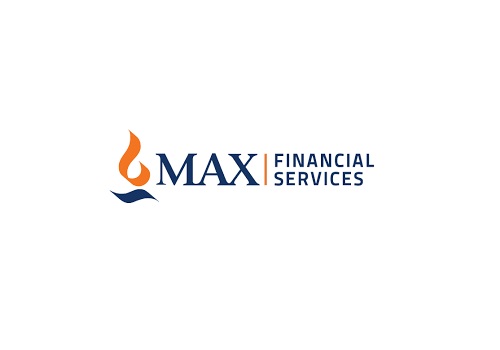


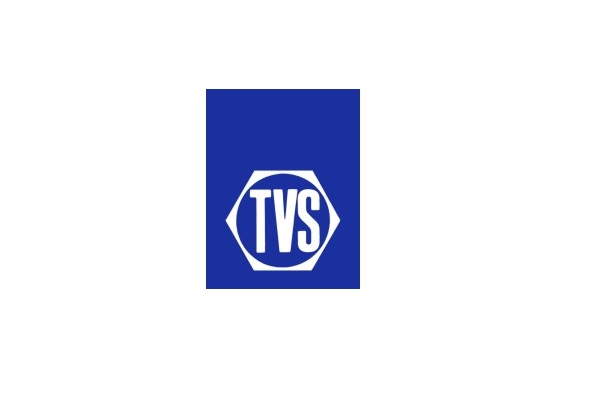
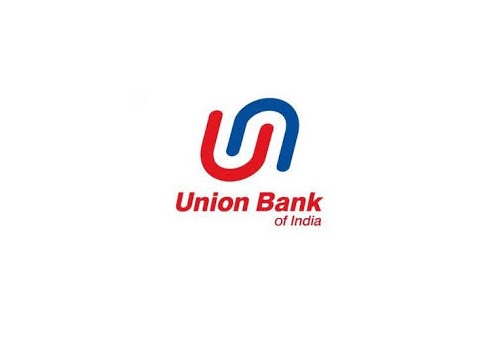

More News
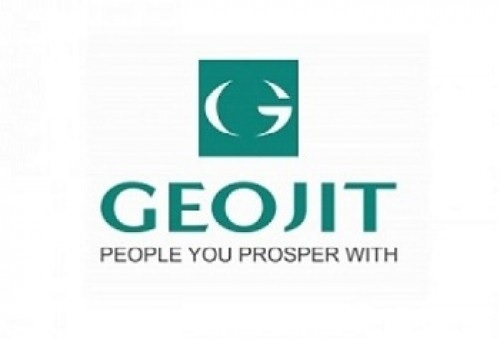
Evening Roundup : A Daily Report on Bullion Energy & Base Metals for 19th Aug 2025 - Geojit ...











